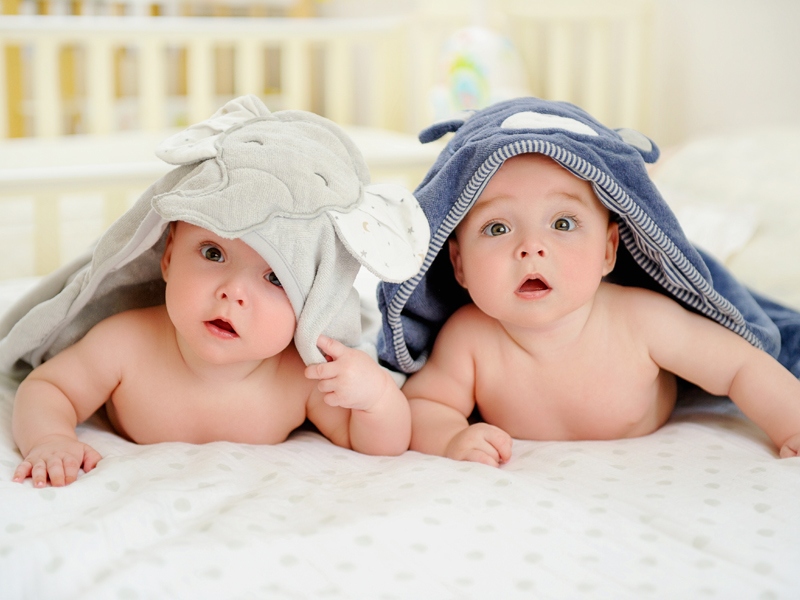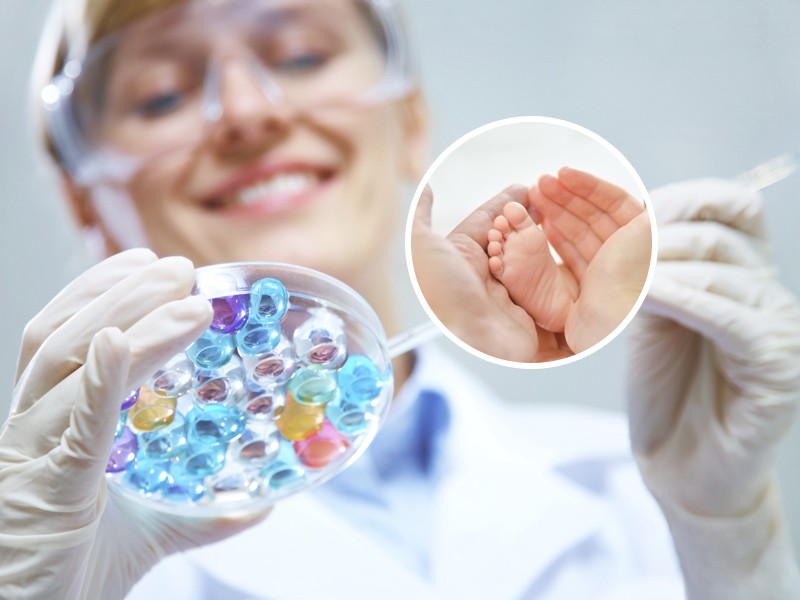Twins and IVF pregnancy: what is the chance of conceiving twins?

Thanks to in vitro fertilization, many couples diagnosed with infertility can give birth to a healthy and long-awaited baby. Reproductive technology provides a type of in vitro conception, where a sperm cell is transferred into an egg outside the woman’s body, followed by placement of the embryo into the uterus.
Multiple pregnancies are one of the possible risks in the IVF protocol. Both monozygous (identical) and heterozygous (fraternal) twins can be born.
In order to understand in more detail the reasons for double fertilization with the birth of two or more children, it is important to delve into the method of artificial insemination.
Probabilities of transfer multiple embryos
The main task of hormonal therapy, used in 80% of IVF, will be to stimulate ovulation to form the required number of mature eggs. Oocyte induction is carried out both during anovulatory cycles and during its natural course.
As a result, several eggs mature in the woman’s ovaries, ready for fertilization. To increase the likelihood of pregnancy and increase the chances of a successful outcome of the procedure, several ready-made embryos (often 2, less often 3) can be transferred into the uterine cavity. If two embryos establish, most likely the woman will give birth to twins.
As practice shows, in such a situation, most of the patients of the clinic are glad that there will be twins. Although this transfer carries hidden risks. Twins require more resources from the mother’s body and there is a chance of complications in the health of the little ones in the first years after birth.
Twins conception statistics after IVF
So how do you decide how many embryos to transfer, 1, 2 or more? In each specific situation, it is important to listen to the opinion of a fertility specialist and weigh all the risks. Consider the statistics of pregnancy in different options:
- When transferring two embryos, the probability of conception for women under 30 is 40-48% at the first attempt.
- If one embryo is transferred, then the chances are reduced to 35-38%.
- In the first case, the probability of having twins increases to 32%.
- With a single embryo after in vitro fertilization and the birth of two children, the probability does not exceed 0.9%.
Accordingly, the transfer of one embryo practically guarantees the birth of one child, but reduces the chances of pregnancy. Two or more fertilized eggs are much more reliable and productive, but with such decisions twins are born.
Identical and fraternal twins
Most often, during in vitro fertilization, two embryos are formed in different oocytes with different sperm. This option is called fraternal twins.
Less commonly, there is a situation of monozygous conception of twins or triplets. The percentage of this situation is extremely small, but it is impossible to completely eliminate such risks.
The reasons for the formation of a homozygous pregnancy:
- When the embryo is cultured, the transfer is carried out on the 5th day of development. If you change the scheme and perform the manipulation on the third day, then the percentage of monozygotic pregnancy increases by 1.52%;
- The second place among the common causes is occupied by additional methods of stimulating sperm. ICSI options used, as well as hatching and PGD. These procedures are capable of disrupting the integrity of the embryonic membrane, which is reflected in the form of a monozygous type of reproduction;
- Artificial insemination of spermatozoa also plays a role when the protocol of stimulation of egg cultivation is not carried out;
- The use of oral contraceptives increases the risks of monozygous pregnancy. Against the background of a three-month withdrawal of drugs, multiple pregnancies occur more often due to the activation of the reserve of the female reproductive system.
Possible risks in multiple pregnancies
Common nuances that should be taken into account, there is a woman waits for the appearance of twins after IVF:
- increased burden on a woman’s body, it will be harder to make two of the fetus;
- twins, and even more so triplets, at birth have a reduced weight threshold and other health complications in the first two to three years;
- complications are possible for the patient, depending on the general state of health, hormonal levels, the presence of chronic diseases and age.
For some parents, the possibility of having several babies at once is good news. Many couples consciously choose monozygous conception, after calculating all the risks.
If you want to give birth to one child using the IVF method, there is a freezing service for the grown egg. A great way not to subject the body to another drug preparation in case of failure, and not to lose the chances of conceiving / carrying a baby in the absence of ovulatory cycles.


